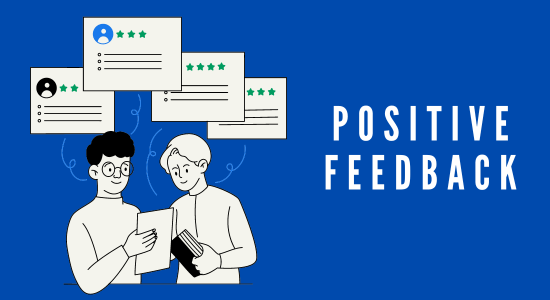One of those fancy words used by snotty business owners is "ecosystem". Any word can sound meaninglessly decent when followed by the word ecosystem - management ecosystem, agricultural ecosystem, audience ecosystem.
So what really is ecosystem? Should it mean anything to you as a home business owner? Would you care to break it down?

Did You Know?
- Startup Growth: Over 100 million startups are launched annually worldwide (GEM Global Report).
- Contribution to Economy: Small businesses account for 44% of U.S. economic activity (SBA).
- Innovation Hub: 65% of patents come from small businesses (USPTO).
- Digital Transformation: 70% of companies either have a digital transformation strategy in place or are working on one (IDC).
- Funding: Global venture capital investment reached $300 billion in 2020 (KPMG).
So What Really Is Ecosystem?
Let's simplify the concept. You’re running a business from home. You may be working alone in your living room, but there's a whole network of connections that keep the economy going smoothly out there. This web of relationships includes other businesses, people, and companies that all play a part in helping your home business thrive.
1. Tools for Doing Business
Computer Programs
When running a home-based business, computer programs serve as your digital helpers. They manage various tasks which traditionally would require more hands-on deck or physical presence.
Financial Management
Tools like simple accounting software can help you monitor your income, expenses, and even tax obligations. This way, you stay on top of your finances, knowing exactly how your business is doing money-wise.
Customer Communication
Programs that handle customer communications, like email management systems or chat applications, make it easier for you to talk to your customers. They help keep conversations organized and ensure that you don’t miss any important messages from your customers.
Daily Planning
Planning tools like digital calendars or to-do list apps help structure your day. They assist in setting priorities, scheduling appointments, and listing the tasks you need to complete, ensuring nothing falls through the cracks.
Example:
Imagine you run a small home-based bakery. You could use a program to track how many orders you have, another program to talk to customers and arrange deliveries, and a digital calendar to plan baking and delivery times.
Did You Know?
- Ecosystem Valuation: The top 30 global startup ecosystems are valued at $3 trillion (Startup Genome).
- Employment: Small businesses created 1.5 million jobs annually and account for 64% of new jobs in the U.S. (SBA).
- Survival Rate: About 50% of small businesses survive five years or more (SBA).
- Tech Startups: The tech sector accounts for nearly 40% of all venture capital investment (NVCA).
- E-commerce Growth: E-commerce sales are expected to reach $4.5 trillion by 2021 (Statista).
Online Shops
Online platforms are the modern-day storefronts. They are the places where customers come to see what you have to offer without leaving their homes.
Visibility
Having a website or social media pages allows people to find you easily. They can browse through your products or services at their leisure, anytime and anywhere.
CyberCash Wonderland

"E-commerce is the future, they say. I'm all in, updating my site as we speak. Huge potential, right? Everyone's online, shopping from their couch....
Meh. Do you really believe in it? Can you actually trust it to deliver like a brick-and-mortar? Doubts, baby, doubts.
Yet here I am, preaching its gospel, because that's what you do. You ride the wave, even if you're pretty sure it's gonna crash. Optimism, darling, or at least the appearance of it."
Sales Platform
Websites equipped with shopping carts allow your customers to make purchases directly. They can choose products, add them to the cart, and pay online, making the buying process smooth.
Marketing
Online platforms also serve as marketing channels. You can showcase your latest products, share customer reviews, or post content that relates to what you sell.
Example:
Let’s consider you create unique handcrafted jewelry. Your website could show all the different jewelry you have made, along with prices and descriptions. People can look at each item, decide what they want to buy, and then make a purchase right from the website.
Additionally, your social media pages could show pictures of happy customers wearing your jewelry, which might inspire others to make a purchase too.
Did You Know?
- Remote Work: 16% of companies globally are fully remote (Owl Labs).
- Global Reach: 58% of small businesses have international customers (Small Business Administration).
- Female Entrepreneurs: Women own 31% of small businesses or franchises in the U.S. (Visa).
- Inclusivity: Minority ethnic groups own 45% of small businesses (U.S. Senate Committee on Small Business and Entrepreneurship).
- Sustainability: 64% of millennials consider a company’s social and environmental commitments when deciding where to work (Cone Communications).
The Intersection of Programs and Online Platforms
Your computer programs and online shops need to work in sync to ensure a seamless flow of operations.
For instance, the orders received on your website should be easily trackable in your financial management program.
Likewise, conversations started on social media could be managed through your customer communication program, keeping all interactions in one place for easy reference.
Set up a good interaction between your computer programs and online shops, then you will create a smooth path for your business operations. This not only simplifies your workload but also provides a pleasant shopping experience for your customers, which in turn can lead to repeat business and good word-of-mouth referrals.
- Computer Programs: These are like your digital helpers. For example, a simple money tracking program helps you see how much you sold and spent.
- Online Platforms: Places on the internet like Facebook or Etsy where you can show and sell what you make.
Now, when we talk about these two coming together:
- You use a computer program to count your sales. Let's say you sold 10 handmade scarves last week.
- You sell these scarves on an online platform like Etsy.
- You share pictures of your scarves on Etsy, and people can buy them there.
- When someone buys a scarf, you put that sale into your computer program to keep track.
So, the main point is, you use computer programs to organize your work and online platforms to sell your stuff. They help you work better together in a simple, direct way.
Through these digital tools, you set a strong foundation for your home business, allowing for organized growth and good customer relations.
Did You Know?
- Customer Experience: 86% of buyers will pay more for a better customer experience (PWC).
- Digital Marketing: Digital marketing accounts for approximately 50% of all marketing budgets (Web Strategies).
- AI Adoption: 37% of organizations have implemented AI in some form, a 270% increase over the last four years (Gartner).
- Blockchain: Blockchain's global market value is expected to reach $20 billion by 2024 (MarketWatch).
- Gig Economy: 36% of U.S. workers are part of the gig economy (Gallup).
2. People You Work With
Yourself First
In a home-based business, you are the pillar that holds everything together. Your roles are diverse and integral to the smooth running of your business.
Creation and Production
Making products is often the most time-consuming part. Your skill and creativity are what create the items that your customers will buy. It’s your craftsmanship that sets your business apart from others.
Customer Interaction
Being the face of your business, you interact with customers, answering their questions, and making sure they have a good experience. Your rapport with customers can build a loyal client base.
Decision Making
You make decisions that steer the business in certain directions. From choosing which markets to tap, what products to create, to deciding on pricing, your decisions shape the business.
Example: In a home-based pottery business, you're the one molding the clay, glazing the finished pieces, interacting with customers, deciding on the designs to create, and setting the prices.
CyberCash Wonderland
"Listen, driving your car is ruining our ecosystem! We need to go green, completely green, like now! I'm not talking about us, Brendan. I'm talking about the planet. Every drive you take is like a punch to Mother Earth's face. We should be walking, biking - living in harmony, you know? What? Ecosystems aren't just about that? Oh. Well, maybe I got a bit carried away there. Oh, can you get me a packet of Marlboro on the way? I'm so, so stressed lately."
Help from Others
Even with a small home business, sometimes you might need a hand from others to manage the workload.
Order Fulfillment
Friends or family can help in packing orders, making sure that each item is securely wrapped and ready for delivery. This help can be priceless during busy times.
Answering Inquiries
When the inquiries pile up, having someone to help answer emails or take calls can ensure that customers get timely responses, which in turn can lead to more sales.
Getting Advice
Sometimes, a fresh perspective or advice on certain matters can be very beneficial. It could come from family, friends, or even mentors.
Example: In a home-baked goods business, while you focus on baking, a friend could help by packaging the goods and another could assist in responding to online inquiries.
Customers
Customers are the lifeblood of your business. They are the ones who appreciate and pay for the products you create.
Sales
Customers make purchases that drive your sales numbers. Their buying behavior often gives insight into what products are favorites and what items may need improvement.
Feedback

Through reviews and comments, customers provide feedback that can help you improve. Their satisfaction or dissatisfaction can guide tweaks in your products or services.
Referrals
Happy customers often refer others. This word-of-mouth marketing is invaluable and can significantly increase your customer base without incurring additional marketing costs.
Example: If you’re a home-based graphic designer, customers who love your work will likely refer others to you, and their feedback can help you improve your skills and service quality.
A collective effort between you, the help you might get from others, and the customers who buy your products... They all contribute to the home business ecosystem, making the business a lively and evolving entity.
3. Learning and Getting Better
Progression is a natural part of managing a home-based business. The learning curve is steep, but each new understanding makes your business operations smoother.
Discovering New Tools
The market is flooded with tools designed to simplify business operations. As you explore, you might stumble upon tools that could automate tasks, freeing up your time for other crucial aspects of your business.
Improving Skills
With time, your skills get refined. Whether it's honing your craft or getting better at sales pitches, continuous improvement is part of the game.
Staying Updated
The world changes rapidly. New trends, laws, or market demands can affect your home business. Keeping yourself updated helps in adapting to these changes swiftly.
Example:
Running a home-based tailoring business, discovering a new design software can aid in creating patterns more accurately. It’s a learning process that could potentially save time and reduce material waste.
Growing Online

As your home business gains traction, online growth becomes inevitable. A wider customer base requires a stronger online presence.
Expanding Platforms
Initially, you might start selling on a single platform. As demand grows, expanding to other online platforms or social media channels can increase visibility and sales opportunities.
Improving Online Interactions
Customer interaction isn’t just about responding to inquiries. It’s about creating a community where customers feel connected to your brand. Engaging content and prompt responses help in fostering this community.
Utilizing Online Analytics
Online platforms provide insightful data. This data can help understand customer behavior, popular products, and even optimal times to post content. Utilizing this information can refine your online strategy.
Example:
If you have a home-based business selling homemade candles, initially, you might just sell on Facebook. But as word spreads and demand grows, opening shops on Etsy, Instagram or other platforms can be a new step.
Sharing behind-the-scenes videos of making candles, or posts about different scents, can engage customers. Also, analyzing which platform drives more traffic or what time most sales occur can be invaluable for making informed decisions.
Blending Learning with Online Growth:
The process of learning and growing online are intertwined. What you learn could influence your online growth strategies. Conversely, your online experiences could highlight areas needing learning or improvement. It’s a cycle of growth, where learning paves the way for online expansion and online experiences circle back, providing learning opportunities.
For instance, feedback received online can highlight areas of improvement in product quality or customer service.
On the flip side, a newly learned skill or a newly discovered tool can improve your online operations, whether it’s by enhancing product photos, streamlining order processing, or improving product quality. Every step taken in learning and growing online is a step towards building a stronger, more resilient home business.
This symbiotic relationship between learning and growing online forms an essential part of the backbone that drives a home business forward towards success and sustainability.
The Home Business Ecosystem - Final Words
Alright, did you understand what "ecosystem" is all about? I didn't, by the way. I've no idea.
The big takeaway here isn't about getting hung up on fancy terminology. It's about rolling up your sleeves, diving into the action, and making your home business thrive. Focus on making those sales and satisfying your customers. The fancy big words can wait, it's the actions that truly count.
As you grow your business and the cash starts rolling in, you really won't care about the terminology. So keep working on whatever you do, on sale at a time. That's all it matters.



